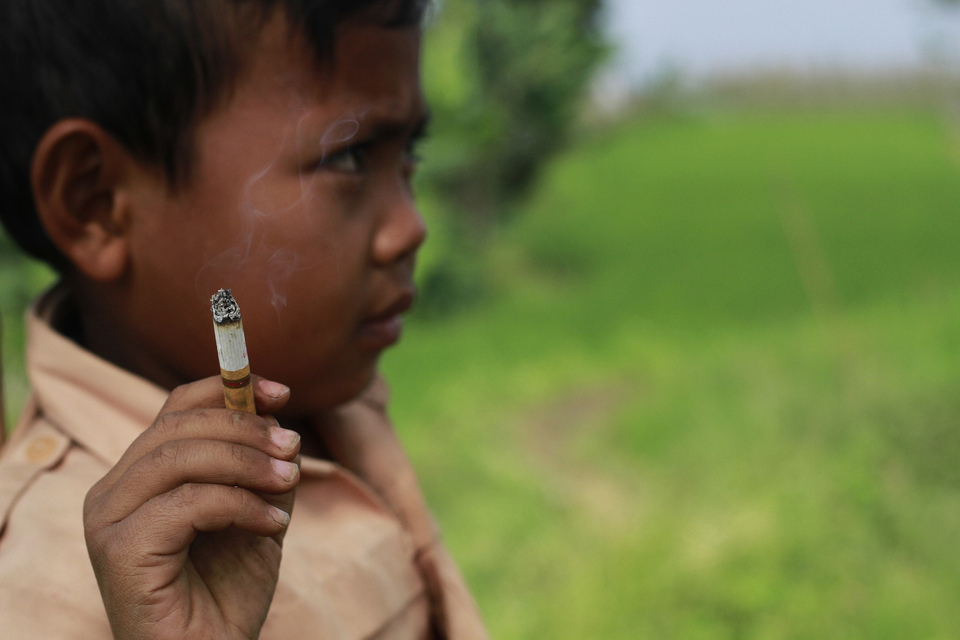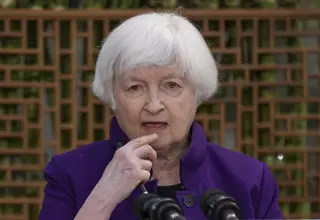Commentary: The Case for a Smoker's License

I and many colleagues advocated for Australia’s pioneering plain tobacco packs and today I’m always asked, “So what’s next in tobacco control?” The best next step is a smoker’s license, that would operate in some of the same ways that we limit access to prescribed drugs.
I’m a regular drug user. Every morning I take a drug to manage blood pressure. I get my supplies from my neighborhood dealer, but I can get the stuff almost anywhere.
My dealer-pharmacist won’t give me my stash unless I hand over a special drug-user’s license from my doctor. It’s a prescription: a temporary licence to use a drug that will reduce my chances of having a stroke. It allows me to get a limited supply. If I want more, I have to start all over again.
If the chemist handed over my drugs without getting a prescription, he could be deregistered, heavily fined or even jailed.
Nearly everyone thinks this is a sensible way of regulating the supply of potent medicines. It reduces the potential for misuse and adverse drug interactions. It ensures use is supervised to monitor problems, so that the dose can be adjusted or stopped.
No one complains that this system is a huge erosion of freedom. No one says it’s demeaning or stigmatizing to have to get approval to access these drugs. No one calls it a great illustration of the dreaded “nanny state."
We do all this for products which promote health, prevent disease or severe pain. We do it for products which are good for us and might save our lives. What if we applied the sensible, near-universal licensing rules we have for prescribed drugs to the supply of tobacco?
What would happen if we treated tobacco not as an unremarkable item of commerce able to be sold in any quantity to anyone who wants it but as an unsurpassed agent of disease that is on track to kill a billion this century.
Smokers would not riot in the streets. Many would welcome it. In Australia just 12.8 percent of adults smoke every day. Each year, about 40 percent make a serious but usually unsuccessful quit attempt. About 90 percent regret having ever started. So 90 percent of 12.8 percent leaves just 1.3 percent contented, leave-me-alone-I-love-it smokers. And many of these strongly support effective tobacco control policies.
How it would work?
A commencement date would be set a few years away. Any adult wanting to buy tobacco would apply online for a smoker’s license with age-authenticating details such as a drivers’ license or passport number to stop anyone obtaining multiple licenses. You’d upload a photo. You’d get back a smart card license needed to buy cigarettes at every purchase.
Tourists could get a temporary license at airports, as they now get SIM cards.
There are two key elements. First, every license applicant would have to pre-commit to how many cigarettes (or cigarette equivalents in roll-you-own tobacco) they’d want to smoke on an average day. There would be three bands: 1-10 cigarettes; 11-20; and 20-40. A tiny proportion of smokers smoke more than 40 a day.
Some would think “look, I don’t want to smoke. If I don’t get the licence, I won’t be easily able to buy cigarettes. Maybe I’ll now give smoking a miss.” Others would use the pre-commitment to lower their daily intake.
In shops, smokers would ask for their brand and swipe their license, showing instantly if they had already reached their weekly pre-commitment limit or could buy more.
Every sale would automatically reconcile with the licensee who purchased it, so retailers would have to account for any stock that was not sold to a licensed smoker.
There would be a license cost incentive to pre-commit to a lower daily maximum. So the annual cost of a 21-40 a day license would be considerably more than a 1-10 a day license.
The second feature is that all license fees would be fully redeemable with interest if a smoker decided to surrender their license permanently before the age of 40. Smokers who quit by middle age avoid much of the excess risk of death that they have over people who’ve never smoked. So having a financial incentive here could be very important.
If a 21-40 a day license was to cost A$200 ($150) a year (about 50 cents a day, or the current cost of half a premium cigarette in Australia today), then a person who quit at 40 after getting their licence at 18, would get 22 years compound interest on their A$4,400 if they quit. At any time a smoker could look online and see how much cash they could get if they relinquished their licence.
What about people turning 18, the legal smoking age? Just as when you apply for a driving licence and study a thick book to pass a knowledge test, so too would new, commencing smokers have to pass a test to show they were knowingly taking the risks of smoking.
It’s widely said that “everyone knows the risks of smoking.” In fact, what most people know is only very superficial, top-line information.
What could go wrong?
Wouldn’t this encourage a black market?
No. Getting a license would be neither difficult nor expensive (compared to the cost of smoking), so there are few reasons why most current smokers intending to continue would not obtain one. A license would enable easy access to tobacco, whereas those unlicensed would need to find illegal supplies.
Here, some would argue that illicit drug trade flourishes in spite of such drugs needing to be sourced from criminals. The implication here is that many smokers would be similarly willing to transact with criminals.
However, this analogy is flawed because while illicit drugs can only be sourced illegally, tobacco would still be readily obtainable legally. It’s therefore difficult to see why significant proportions of smokers would elect to source their tobacco “underground” because of an easily obtained licensing requirement.
A purchasing limit of 40 a day would be insufficient to stimulate significant third-party purchasing schemes. There would not be enough profit incentive involved.
The main explanations for high demand for illicit tobacco are the cheaper price at which illicit tobacco sells, the ease of cross-border traffic in some nations, and the high levels of corruption in which illegal tobacco trade can flourish. None of these factors would in any way be influenced by a user-licensing system and so aren’t arguments against licensing.
Horrendously expensive?
The scheme’s costs would include processing of license applications, renewals, and license surrender refunds (although much of this could be done online) and publicity about the scheme. The cost of the scheme would be drawn from the licensing fees, with retailers paying for the swipe card terminals.
The accumulated license fees would be refundable to smokers wishing to surrender their licences. However, not all smokers would surrender their licence by the final age limit specified for surrender and refund (40 years). This would leave a large pool of funds that could be used to administer the scheme.
Young smokers with profound mental health or intellectual disabilities may be unable to pass the licensing test. Special provision could be made for another adult or carer to obtain a licence on their behalf, after consideration of their circumstances.
Stigmatization of smokers?
Every current smoker’s experience has been that tobacco products have always been sold alongside other unrestricted commodities such as confectionery, newspapers and magazines. This has powerfully conditioned the view that cigarettes are just “ordinary” commodities and that a proposal like this is self-evidently draconian.
Some smokers may feel that they are being treated like registered addicts, and that the license epitomizes their stigmatization. But no one feels this way about their need to get a prescription for drugs.
When I started work in the mid 1970s, tobacco advertising was everywhere. All major sport was tobacco sponsored. You could smoke anywhere. Packs had warnings so small you needed a magnifying glass to read them. All this was said to be impossible to change.
It wasn’t. Most of it took time to play out from being seen as just nuts to being seen as totally normal. 180 nations have ratified the World Health Organization’s Framework Convention on Tobacco Control and an increasing number are seeing their tobacco caused disease rates falling.
We can make smoking history. Licensing might be a great way to turbo-charge the speed at which it happens.
Simon Chapman is a professor of public health at the University of Sydney. This article is an edited version of a video presentation available here.
Tags: Keywords:POPULAR READS
Nissan to Make Next-Generation EV Batteries by Early 2029
Solid-state batteries are widely seen as the next step for EVs.Airlangga Set to Extend Leadership in Golkar After Election Success
Under his leadership, Golkar rose to the second position in the legislative polls and successfully made Gibran the elected vice president.Yellen Says Iran's Actions Could Cause Global 'Economic Spillovers'
Iran's missile attack on Israel early Sunday came in response to what it says was an Israeli strike on Iran's consulate in Syria.Takeaways from Prabowo's Responses to Legal Motion Contesting His Election Win
Part of the argument addresses the claim that the candidacy of Gibran Rakabuming Raka, Prabowo’s running mate, is unlawful.Prabowo Camp Cites ‘Procedural Error’ in Legal Challenge by Rival Candidates
The Constitutional Court's main task is to address alleged discrepancies in vote tallies, which neither of the plaintiffs challenged.Popular Tag
Most Popular






















